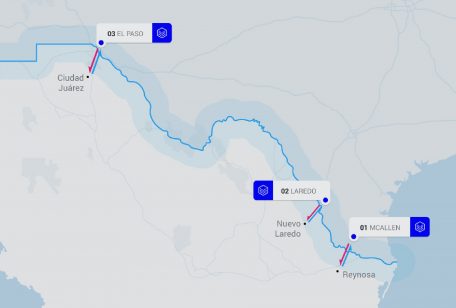
Joel Pacheco Gonçalves
A new telecommunication project is brewing in Mexico to bring connectivity closer to end users and increase fiber coverage in the country.
TELECOMM, a federal government agency, runs the project
The “Red Troncal” or Backbone Network project was appointed to a federal government agency called TELECOMM after the recent Constitutional Reform and the new Federal Telecommunications and Broadcasting Law.
TELECOMM has to plan, design and execute the construction and growth of a high capacity fiber optic national network.
Goals: Promote competition and cover unserved locations
In Mexico, 50% of the population live in areas serviced by more than one fiber optic provider, 15% live in areas with only one provider and the rest 35% dwell where there is no coverage at all; according to TELECOMM.
Therefore, the “Red Troncal” project aims to:
- Support the development of broadband telecommunication services.
- Promote competition in areas served by only one fiber optic operator.
- Promote services in locations that are underserved.
The underlying effect of the Red Troncal for the industry
Today, Mexico has an Internet penetration of 63.9% (71.3 million users) with an average speed of 7.5 Mbps, ranking #76 globally according to Akamai’s latest State of the Internet report.
Read on: A glimpse into Mexico’s broadband Internet growth
As the coverage of fiber optic services expands in Mexico, it is natural to expect an increase in demand, quality, and speed of the Internet service in the country.
The development of broadband services in underserved locations will have a positive impact on the US border telecom market where Mexican networks route their traffic through.
Markets such as McAllen, where MDC has the world’s largest concentration of Mexico networks, and El Paso will benefit from the internet expansion because most of the traffic from Mexico still flows in and out of the United States, either in or through these connectivity hubs on the border.
An unbeatable opportunity for international network providers
Mexico has been growing nonstop since the award-winning telecommunication reform in 2013-2014, becoming one of the most attractive emerging markets for the global telecom industry.
Continue reading: Analysis: The telco industry in Mexico four years after the reform
However, opening an operation in Mexico can be a regulatory hassle, and even after doing so, the operator would have a hard time finding a neutral carrier-dense data center in the country.
The smart way, as we like to call it, is to start where the Mexican networks connect in the US; so that you can avoid trouble, speed up your time to market, and stay within boundaries of a known regulation.
Several networks and content providers recognize these benefits and connect in MDC to service Mexico from a carrier-neutral and reliable data center. We have three facilities on the US border, in McAllen, Laredo, and El Paso.
Sparkle, one of the most interconnected networks and among the top 10 IP Transit providers worldwide, understands this unbeatable opportunity and recently became our latest addition to the MDC ecosystem in the border city of McAllen, Texas.








